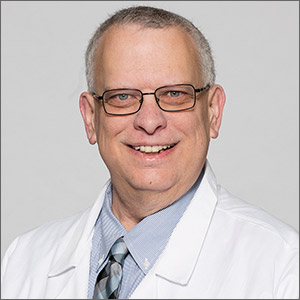Every family physician has experienced the onset of a bad flu season, when suddenly the phone starts ringing off the hook. As the family medicine lead physician for Cleveland Clinic Express Care Online (ECO)—specifically its on-demand virtual visit platform—I have been performing virtual visits as part of a small team of physicians and nurse practitioners for 5 years, and was capably seeing 5 to 15 patients in an afternoon across the 18 states in which I am licensed. Until recently, our Distance Health team collectively would perform between 3000 and 4000 virtual visits per month.
On Saturday, March 14, 2020, we had the virtual visit equivalent of the phone ringing off the hook—to the point of breaking the phone. The ECO Medical Director, Matthew Faiman, MD, texted me to ask if I would be willing to sign on to the platform for a bit to help out with high volume—and whoosh, just by signing on, I had 20 patients waiting in the queue, with hundreds more trying to get a visit, all related to COVID-19. And patients who would normally leave a line if the wait time was more than 5 minutes were willing to stay online for more than 3 hours, if necessary, to consult with a provider.
After handling in excess of 38 patients that afternoon (some of whom were unfortunately dropped by the platform, which was overwhelmed by sheer volume), I did my best impression of Roy Scheider in Jaws: I emailed Matt, “You’re gonna need a bigger boat.”
How we got a bigger boat
As an early pioneer in telemedicine, Cleveland Clinic was well suited to quickly ramp up its use of virtual visits (both synchronous ECO visits, which occur in real time, and asynchronous e-Visits, in which the patient provides information via images, video, audio, or text file, to be evaluated and responded to by the provider within a specified timeframe). Even with a robust existing infrastructure, however, we faced challenges that necessitated a dynamic response.
The first step was to increase available personnel. Cleveland Clinic leadership immediately put out a call for volunteers to sign on to the on-demand platform, and more than 200 primary care physicians and advanced practice providers responded. We also dedicated an additional 30 full-time nurse practitioners to our ECO team of physicians, nurse practitioners, and physician assistants.
Daily live online training sessions were launched to walk staff through how to set up and conduct a virtual visit. As we navigated the day-to-day reality of increased virtual visits, our accumulated experience informed the development of what we refer to as a “distance health playbook.” This single repository of information is accessible to all caregivers, and we also created a digital pocket card containing the most pertinent information from the playbook and automatically pushed it to all Cleveland Clinic–issued iPhones. Providers literally have what they need at their fingertips, no matter where they are when they “see” a patient.
The full playbook outlines how to adopt and ramp up telemedicine services. This includes details on clinician training, scheduling visits, coding for services provided during a telemedicine visit, and demonstrating empathy from a distance. There are also patient-facing resources on how to access various digital platforms, which may be handy for less tech-savvy patients. For example, if your patient does not already have FaceTime or Skype installed on his phone, or is not familiar with the use of such programs, the playbook includes specific instructions (with screencaps) that you can share.
Continue to: While initially available...


